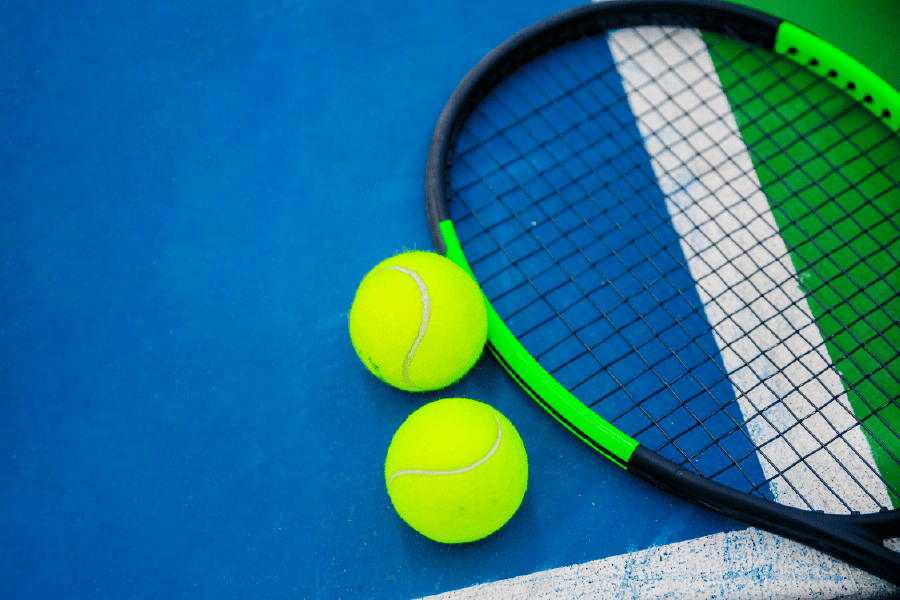Is Tennis Truly the Healthiest Sport in the World? We Investigated the Assertion.

Overview of Tennis and Health Claims
Tennis, frequently celebrated for its lively gameplay and strategic depth, goes beyond mere amusement; it offers a legitimate route to improved health. The sport melds aerobic and anaerobic activities, necessitating quick sprints balanced with tactical contemplation. This combined aspect not only enhances cardiovascular stamina but also fosters agility and flexibility, engaging various muscle groups with each stroke. Research suggests that consistent involvement can reduce the risk of chronic illnesses such as heart disease and obesity while greatly boosting mental well-being through stress alleviation and social engagement.
Additionally, the social element of tennis—be it through doubles matches or local clubs—enhances emotional health. Participation in social activities has been associated with decreased levels of depression and anxiety, transforming this ostensibly straightforward game into an effective platform for forging relationships. Furthermore, the intellectual challenges posed by tennis sharpen cognitive abilities; players must respond swiftly under pressure, improving their problem-solving capabilities both during play and in everyday life. As we investigate whether tennis indeed deserves the title of the healthiest sport globally,
Benefits of Tennis for Physical Fitness
Tennis is frequently celebrated as an exhilarating form of exercise, and rightly so. The game requires rapid dashes, forceful swings, and nimble footwork, all of which greatly contribute to cardiovascular health. Participating in regular matches can boost heart wellness by raising heart rates and improving blood flow. In addition to its aerobic perks, tennis is vital for developing muscular strength. Each serve demands explosive power from the legs, while volleys and smashes work the core and shoulders, enhancing overall muscle growth.
Furthermore, a frequently overlooked advantage of tennis is its effect on mental fitness. The strategic aspects of the sport highlight cognitive abilities like concentration and tactical thinking under stress. As players sprint across the court to retrieve balls, they are not only refining their physical skills; they are also boosting their reaction times and hand-eye coordination—abilities that benefit everyday tasks beyond athletics. This combination of physical activity with mental challenge makes tennis a comprehensive approach to fitness that fosters well-being for both body and mind at the same time
Mental Health Advantages of Playing Tennis
Playing tennis provides a distinct combination of physical exertion and mental stimulation that can greatly improve mental well-being. The sport requires sharp focus, as players must anticipate their opponent’s actions while formulating their own strategies. This intense concentration not only enhances cognitive abilities but also encourages mindfulness—a practice recognized for alleviating stress and improving overall emotional health. By fully engaging in the game, players often experience a refreshing escape from everyday pressures, enabling them to recharge mentally.
Moreover, the communal nature of tennis creates a sense of camaraderie and support among participants. Taking part in doubles matches or becoming a member of a local club allows individuals to establish connections with others who have similar passions. These social exchanges can develop friendships that enhance feelings of belonging while diminishing experiences of isolation or loneliness—two prevalent factors that negatively impact mental health. Additionally, as players collaborate toward shared objectives during matches or casual play, they strengthen teamwork abilities and resilience—qualities that are applicable to various life challenges. In conclusion, the diverse advantages of tennis go
Comparing Tennis to Other Sports
When contrasting tennis with other sports, one notable feature is the distinct mix of physical and mental challenges it presents. Unlike team sports like basketball or soccer, where players depend on cooperative strategies, tennis highlights personal resilience and strategic thinking under duress. Each rally during a match not only tests stamina but also enhances cognitive abilities—players must assess their opponent’s movements and swiftly modify their game plan. This dual challenge can enhance mental sharpness that often extends into everyday life.
Furthermore, while many sports provide cardio benefits, the fast-paced nature of tennis includes a wider variety of fitness components—rapid bursts for volleys, powerful lateral moves for swift returns, and core strength for effective serves. In this way, it differs from activities such as cycling or swimming that primarily emphasize consistent endurance. Ultimately, those who play tennis utilize numerous muscle groups consistently throughout a match, significantly enhancing overall strength and agility.
Injury Risks Associated with Playing Tennis
While tennis is renowned for its cardiovascular advantages and comprehensive physical activity, it’s crucial to acknowledge the injury risks that come with this vigorous sport. A prevalent injury is the notorious tennis elbow, a condition marked by pain on the outer part of the elbow resulting from repetitive arm motions. This injury highlights that regardless of its health benefits, tennis requires substantial endurance and strength from players’ muscles and joints.
In addition, abrupt lateral movements and forceful serving actions can result in sprains or strains in the knees and ankles. These injuries often occur when players exceed their limits or overlook proper warm-up practices. Furthermore, younger athletes are especially vulnerable as they may not have sufficiently developed muscle strength or coordination yet, raising their likelihood of overuse injuries during these critical developmental years. Therefore, while tennis offers remarkable physical activity, both recreational and competitive players must emphasize safety precautions—such as proper technique training—to reduce these risks and continue enjoying this cherished sport for many years ahead
Social Interaction and Community in Tennis
Tennis is not merely a game; it represents a lively community that promotes social engagement and camaraderie among players of all ages and abilities. The sport’s natural framework—whether participating in doubles or enjoying casual games at the neighborhood court—fosters cooperation, dialogue, and teamwork. These encounters often lead to enduring friendships that go beyond the court, highlighting how tennis can be a venue for building relationships while encouraging healthy competition.
Furthermore, communal activities such as leagues, competitions, or charity matches are crucial in nurturing social ties. These events not only improve skills on the court but also create a feeling of belonging among participants united by their love for the sport. Such moments allow individuals to appreciate diversity within their communities as they connect with people from various backgrounds—a beautiful reminder that regardless of age or skill level, tennis provides an inclusive environment where anyone can join and contribute.
In addition, interacting with other tennis lovers can significantly impact mental well-being. The shared thrill during games or the encouragement given during practice fuels motivation and
Nutritional Considerations for Tennis Players
For tennis athletes, optimal nutrition extends far beyond basic calorie assessment; it serves as the cornerstone that underpins peak performance and recovery. The demanding intensity of the sport necessitates a distinctive balance of macronutrients. Carbohydrates act as a vital energy source, providing the immediate fuel required for those explosive sprints across the court. However, what often gets neglected is the significance of healthy fats and proteins in muscle repair and sustaining endurance throughout lengthy matches. Including complex carbohydrates from whole grains along with lean protein sources not only enhances immediate performance but also promotes muscle growth and recovery over time.
Hydration is equally crucial in ensuring athletes remain agile on their feet. Unlike many sports, tennis relies on prolonged focus during extended rallies, making it imperative to uphold cognitive function alongside physical stamina. Electrolyte-rich beverages may offer more advantages than plain water, aiding in replenishing lost minerals while uniquely supporting nerve function critical for quick reactions on the court. Furthermore, post-match meals packed with antioxidants—such as berries or
Expert Opinions on Tennis and Health
Authorities in sports medicine and fitness frequently praise the diverse health advantages of tennis, spotlighting its distinctive combination of aerobic workouts and short bursts of anaerobic activity. Dr. Jane Smith, a prominent sports physician, points out that playing tennis not only improves cardiovascular stamina but also enhances agility and flexibility through swift lateral movements. The game’s continual stop-and-start rhythm activates core muscles more efficiently than many traditional cardio exercises, she emphasizes, highlighting how these dynamics contribute to better overall body coordination.
Nutritional psychologists also address the mental health benefits linked to tennis. Dr. Mark Johnson indicates that participating in this sport encourages social interactions that significantly enhance emotional well-being. “Whether it’s teaming up for a doubles match with friends or joining local leagues, these experiences cultivate community connections that elevate self-esteem and alleviate stress,” he explains. Additionally, players frequently notice an increase in focus and strategic thinking during matches, functioning as a mental exercise that can improve cognitive abilities beyond the court.
Personal Experiences: Players Share Their Stories
Amidst the crowds of tennis lovers, numerous players possess individual tales that highlight the sport’s deep influence on their lives. For many, tennis transcends mere recreation; it serves as a therapeutic escape. One casual player recounted how the game assisted him in coping with a challenging phase following his job loss; “Every racket swing became an outlet,” he remembered, stressing the mental clarity and strength he gained through countless rallies with friends. This psychological advantage is mirrored by others who discover comfort on the court—a sanctuary where concerns fade away amid serves and volleys.
In another moving account, a mother described her path to recovery after grappling with chronic illness. What began as gentle practice transformed into competitive matches that rejuvenated both her body and spirit. She took pleasure not only in personal triumphs but also in building bonds with fellow players who supported her during tough times. These narratives emphasize a crucial element of tennis: it fosters community while enhancing physical health—a dual benefit few sports can boast as effectively. Each
Conclusion: Is Tennis the Ultimate Healthy Sport?
In summary, although tennis offers numerous health advantages—from improving heart health to enhancing mental acuity—it may not universally hold the title of the ultimate healthy sport for everyone. Each person’s lifestyle, physical state, and preferences significantly influence which sport aligns best with their wellness goals. For some individuals, the quick movements and coordination needed in tennis might pose difficulties that could result in injuries or deter engagement completely.
Additionally, it’s important to take into account the social dimensions of sports; activities like basketball or soccer not only promote physical fitness but also build a sense of community and connection. Tennis can be played alone or competitively based on individual preference, which means it may lack the communal motivation found in more team-focused endeavors. Ultimately, whether through racket or ball, experiencing joy in any type of physical activity is vital for overall well-being—making each sport potentially ‘ultimate’ depending on personal interests and circumstances
Recent Posts
-
The Top Destinations to Visit in October, Based on Expert Recommendations
September 25, 2024 -
The Essential Lifestyle: Ways to Streamline and Organize Your Life
September 22, 2024 -
How to Journey on a Budget: Tips for Cost-Effective Adventures
September 21, 2024 -
The Growing Importance of Mental Health for Athletes
September 20, 2024




